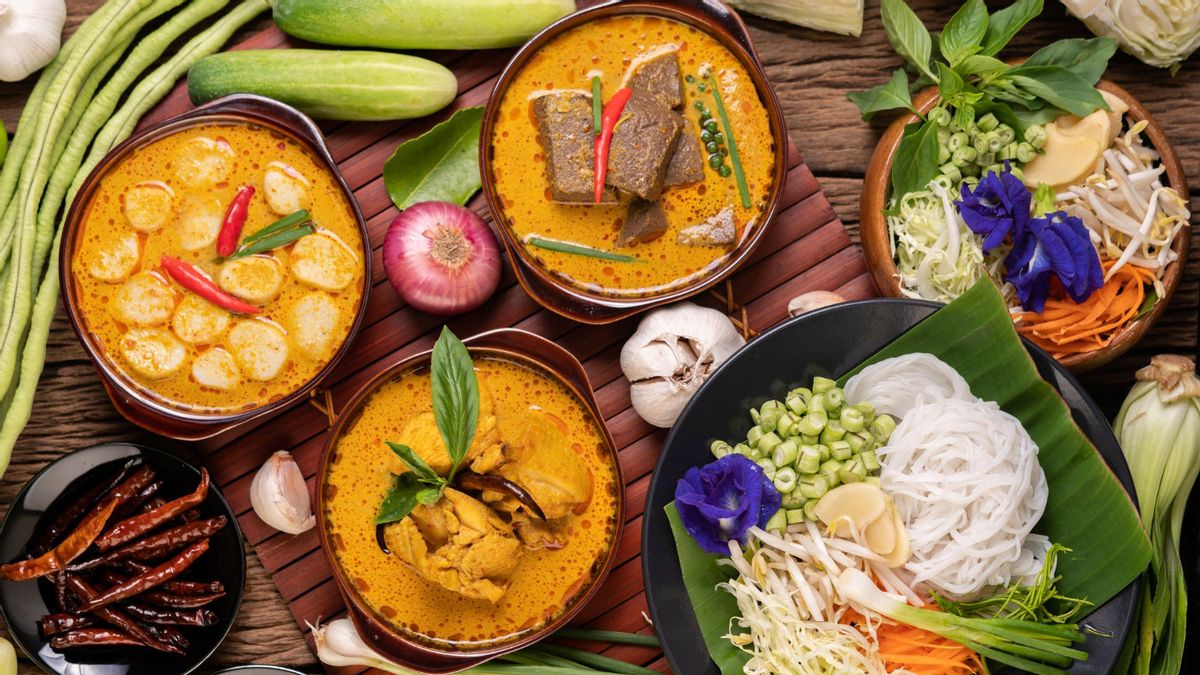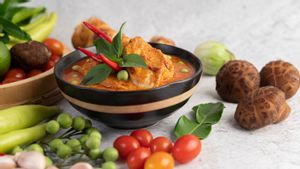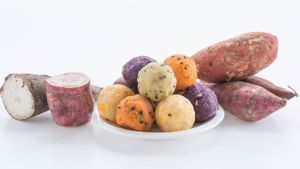YOGYAKARTA The most comfortable rainy season enjoys warm dishes when air temperature decreases. At that time, references to various typical Nusantara soups need to be explored more deeply. If you like culinary cruising or experience various special dishes of an area, the archipelago has a wealth of taste, especially the soup that is served warmly, here are the references.
Rawon is a typical food of East Java. This spice-scented beef soup is black because it uses a material filled with keluwak seeds. Spice seasonings used include lemongrass, citrus leaves, turmeric, kemiri, lengkuas, ginger, and turquoise.
Dwarf fruit seeds cannot be used carelessly for cooking spices. The reason is, the bua seeds are toxic if not left behind for approximately 40 days. But in East Java, these fruit seeds are processed traditionally until they are safe to eat and serve as dishes. Rawon, usually served with white rice, salted eggs, raw sprouts, and spicy chili sauce.
There are various variations of sugary in the archipelago. Reportedly, this sugary is the result of cultural acculturation with India and the Middle East which was brought in in the past. After successive adaptation of materials in Indonesia, various kinds of sugary variations were created. As you may have tried, ranging from goat sugary, chicken, fish head, to cassava leaves.
Gulai is thick in size because it uses coconut milk. The seasoning is quite pronounced but still at a gentle level rather than rendang. The soup served is warm and full, can be purchased easily at a hawker center or in a traditional restaurant.
Like sugary, soup in the archipelago also has thousands of variations. Each region and ethnicity has their own way of creating a soto menu. Basically, soup is a soupy soup that is served warm. The variation of the sauce is also varied, ranging from clear, yellow, or sustainable ones. For Betawi soto, it contains meat or jeroans that have white coconut milk but added butter and served with white rice and bail, empirical, tomato slices, and onion leaves.
Unlike Betawi soup, a typical Soto Lamongan with koya sprinkles, or garlic powder, is on the dish. This traditional type of soto is indeed from Lamongan which contains pork or chicken and broth pieces that are tastey. Usually, chicken seeds are served with soun, thin slices of cabbage, daging onions, boiled eggs, and shrimp crackers along with koya sprinkles.
Mixed noodles come from Bandung, which is an aromatic soup combining beef slices, beef jeroans, meatballs, flat yellow noodles, and complementary to the form of dauge, leaf slices, fried shallots, and crackers. Uniquely, beaten noodles include soup that is served warm due to soup. More typically, the flavor of chili sauce is spicy and soy sauce mixed with soup.
Laksa has scathing and calming flavors. These dishes include classic dishes that are easy to find in restaurants in Southeast Asia. Laksa is developed under the influence of different culinary traditions in each region. The most famous version of the laksa, first a viscous acid and cari laks.
The most famous culinary destination in Indonesia, is Makassar. The port city which is located in the south of Sulawesi Island and is famous for its Coto Makassar dish. This thick and thick soup, usually contains beef, jeroan in the form of babat, brain, lungs, or intestines.
The process of cooking Makassar coto is quite time consuming. The meat is boiled until it is soft and then added with spices. Dishes are usually served with rice or ketupat. Even though they come from Makassar, you can taste this dish in many restaurants or food sellers throughout Indonesia.
Tekwan is a term for traditional processed fish meatball soup. An important component of this dish, is tekwan fish meatballs made from a mixture of ebi or shrimp paste, tapioka, and flour then boiled until cooked. The broiler is made of fish or shrimp, mixed with mushrooms, dried flower, bengkuang slices, garlic, and leek leaves. This fresh and fresh flavor of warm soup from Palembang is suitable for serving when the temperature is cold.
Konro is a unique soup, which comes from Makassar. This flavor-rich beef soup is also called the conro soup. Usually made with cow ribs that emit a rasal and ngaldu flavor. This dish is unique because it uses traditional Indonesian spices such as keluwak and lengkuas.
Coconut gongtong is a soup originating from Cirebon. Cooked in clay sauce, the sauce is made from broth, added garlic, onions, kemiri, turmeric, nutmeg, coconut milk, sweet soy sauce, cloves, lemongrass leaves. Variety of empirical broth, maybe different. But for sure, served with sprinkling of cut kucai leaves.
The tail soup does not only contain beef and the bones of the cow's tail. But it also contains carrots, potatoes, and spices-rich products in the form of cinnamon, cloves, nutmeg, white pepper, shallots, garlic, ginger, and onions. The combination of these spices creates solid flavor consistency. Like other soups, spice paste is mixed first so that the taste is more glowing. Finally, the tail soup is served with rice, tomato slices, and fried red onions sprinkles and leek slices.
Pallubasa comes from Makassar which is classified in envere and viscous soup. Made containing a combination of meat or buffalo jeroans. Strong brushes are usually added to the scarred coconut that has been broken. Generally, it is suitable to eat with a plate of rice and scales.
SEE ALSO:
Unlike the previous soup-sup, the kaledo contains bull's legs which are typical foods of Donggala, Palu, Central Sulawesi. Sups made of bull's feet, have clear but oily soups. Usually peppered with onions, chilies, and lime juice. The best part of this dish, is the bone cord that can be enjoyed by stylized or sucked in a straw.
This traditional soup is influenced by Dutch dishes from Manado, North Sulawesi. The brenebon soup contains red beans, garlic, onions, shallots, meat, cloves, white pepper, nutmeg, and red chilies. The variation of this dish is usually adjusted in the form of pork or beef. Once ready, the brenebon is usually served with sprinkled onions and fried shallots.
Those are references to various typical Nusantara soups that you can enjoy during the rainy season. Overall, various types of Indonesian soups above, are served warm or hot along with white rice.
The English, Chinese, Japanese, Arabic, and French versions are automatically generated by the AI. So there may still be inaccuracies in translating, please always see Indonesian as our main language. (system supported by DigitalSiber.id)


















